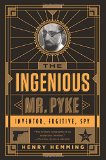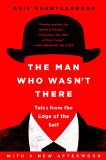Summary | Excerpt | Reviews | Beyond the book | Read-Alikes | Genres & Themes | Author Bio

The Surprising Truth About When, Where, and Why It Happens
by Benedict CareyIn How We Learn, New York Times science journalist, Benedict Carey, offers a survey of research into memory and learning with some tantalizing conclusions: not least that time spent on Facebook and email when we are supposed to be studying or working, might not be such a bad idea after all.
He begins with a personal anecdote, the first of many that run through the book, about his own experience as a "learner" at college. Carey's style is self-deprecating and informal and this makes the material more accessible to the layman. Early chapters, illustrated with stories such as the amazing life of H.M. (see 'Beyond the Book') a man whose hippocampus was surgically removed in a failed attempt to relieve his epilepsy, are concerned with the biology of the brain. It is also interesting to read about the split-brain research carried out in the 1980s which underpins talk of left or right-brained activities, concepts in common parlance today.
There are also some intriguing accounts of the history of memory research as an emerging field during the late 19th and early 20th centuries. Carey recounts stories of children learning to recite Henry Wadsworth Longfellow's poem, "The Wreck of the Hesperus," and of amateur researchers spending lonely hours learning of nonsense words, before moving on to more recent work on questions of the retrieval and storage of memories.
Although these early chapters are easy to read and interesting, Carey's emphasis on the history of research into learning and memory in the first half did leave me wondering where the "surprising truth" that the title suggests, would appear.
Happily, in the later chapters, he does turn to learning processes and gives some interesting suggestions about how students might change the way they approach studying, all backed up by research examples. Sections considering the value of testing, pre-testing and self-testing, for example, are thought-provoking. In one instance, teachers at UCLA have experimented by giving one group of learners a pre-test of material they have not yet covered, which another group also about to cover the same material, did not take. When the final actual test was taken at the end of the course of study, a significant number of the group who had taken the pre-test scored higher than their peers who had not. This suggests that seeing the kind of questions they will be asked and the language they will be expected to use helps students learn better.
Then there is the concept of distraction – evidence that time spent checking email or checking up on Facebook newsfeeds – can actually be useful to a learner stuck on a problem because you can let go of the difficulty and then return to it afresh. To support this claim, Carey describes the work of Graham Miller, co-founder of the London School of Economics. In the 1930s, Miller put forward the concept that the brain can benefit from a period of incubation, or time away from the problem at hand, that it is more able to move past a difficulty after some time off. Other investigators have found evidence to back up his position and tried to pin down what the best conditions for incubation might be. In 2009, researchers at Lancaster University carried out extensive experiments testing different kinds of distraction – listening to music, surfing the Internet or switching to some other piece of work altogether – to see which forms of distraction were most effective and how long they should ideally last. They found that the kind of break taken depended on the individual but that longer distraction periods - of twenty minutes, rather than short breaks of five minutes – were most effective. It's also worth noting that they also stressed that distraction only works when a person is truly stuck on a problem. That's because, says Carey, "if you're motivated to solve the problem...your brain will continue to work on it during the break."
The idea of not thinking about a challenge as a helpful approach is further expanded in another chapter with the concept of "percolation" as a useful tool for people working on long-term projects. Get the project started well in advance and your brain will be gathering material without you even realizing it. Other chapters on mixing up skills – he calls this 'interleaving' - during practice sessions, optimal amounts of time to spend during study sessions and deciding whether to stay up late or get up early before particular activities, also suggest real-life applications for research-based findings about how we learn.
It seems likely that most readers of How We Learn would find something of interest and some suggested tweak to how they approach a new skill or subject. The book is perhaps not as "surprising" as the subtitle claims and at the end of the text there is an appendix of eleven essential questions that covers most of the author's actual advice on how to learn. But to only read the appendix would be to miss out. How We Learn is witty and informative, clearly well grounded by the author's depth of knowledge.
![]() This review was originally published in The BookBrowse Review in November 2014, and has been updated for the
July 2015 edition.
Click here to go to this issue.
This review was originally published in The BookBrowse Review in November 2014, and has been updated for the
July 2015 edition.
Click here to go to this issue.

If you liked How We Learn, try these:

by Henry Hemming
Published 2016
The untold story of an enigmatic genius who changed warfare forever.

by Anil Ananthaswamy
Published 2016
A tour of the latest neuroscience of schizophrenia, autism, Alzheimer's disease, ecstatic epilepsy, Cotard's syndrome, out-of-body experiences, and other disorders—revealing the awesome power of the human sense of self from a master of science journalism
Your guide toexceptional books
BookBrowse seeks out and recommends the best in contemporary fiction and nonfiction—books that not only engage and entertain but also deepen our understanding of ourselves and the world around us.